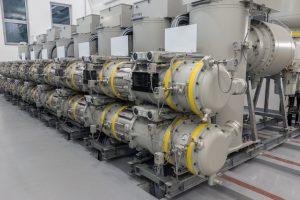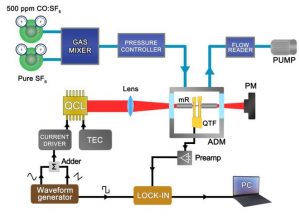July 26, 2022


Detecting CO gas by means of wavelength modulation, second harmonic modulation, and photoacoustic techniques requires high precision and stable control of the quantum cascade laser in the QEPAS sensor. Wavelength Electronics’ QCL driver, the QCL2000 LAB, enabled sensitive measurements with minimal electronic noise from the laser for narrow linewidth from the QCL. The driver also allows analog modulation of up to 2-3 MHz for wavelength modulation and second harmonic modulation in the QEPAS sensor. The stability of the QCL is critical for exact excitation of the gas molecules detected by the quartz tuning fork.
This benchtop QCL driver instrument exhibits noise performance of 1.3 μA RMS up to 100 kHz with an average current noise density of 4 nA/√Hz. The QCL2000 LAB QCL driver instrument enables CO detection at parts-per-billion levels with low noise and stable laser output. This makes the developed QEPAS a reliable tool for CO monitoring inside gas-insulated switchgears and other high-voltage apparatuses using SF6 as the gas insulating medium.
The complete case study is available as CS-LD05.

